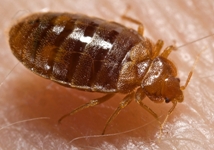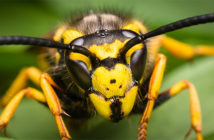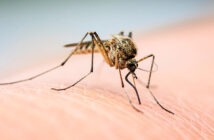A new survey conducted earlier this year confirms what pest management professionals around the world have been seeing in the field that bedbugs are back in a very big way.
This survey, conducted between January and April 2010, by the National Pest Management Association (NPMA) and the University of Kentucky aimed to throw some light on this international problem. In total nearly 1,000 responses were received – 521 from US companies and 429 completed surveys from international organisations from 43 counties – this included 113 from Europe.
|
An overwhelming 95% of US respondents indicated their company or organisation had encountered a bedbug infestation in the past year, with similarly high frequencies reported for Canada (98%), Europe (92%) and Africa/Middle East (90%). “The results of the 2010 Comprehensive Global Bedbug Study suggest that we are on the threshold of a bedbug pandemic, not just in the United States, but around the world,” said Missy Henriksen, vice president of public affairs for NPMA. “Because bedbugs don’t discriminate between rich and poor, don’t have a preference for climate or environment, public awareness, education and vigilance are key in detecting and preventing bedbug infestations.” |
|
|
|
In the US, bedbugs are infesting homes, apartments, hotels, retail stores, offices, places of worship, college dorms, hospitals, daycares, libraries, modes of transportation, movie theaters, laundry facilities and other places where humans live and gather. To read the Executive Summary report – click here. In brief, some of the key survey highlights are: 1. Professional pest management companies have reported a dramatic increase in bedbug calls in recent years. While, there is not one clear answer for the resurgence of bedbugs, the majority of respondents cited increased travel and movement of people from across town and around the globe, lack of societal awareness and precautions and changing pest control products and methods. 2. Bedbugs are a much greater problem in urban and suburban areas with larger populations of people who live close together and interact in enclosed spaces on a regular basis. Because of the bedbugs’ ability to ‘hitchhike’ on people and their belongings, these living environments will continue to see higher infestation occurrences than those living in rural areas. According to the survey, 52% of pest management companies report treating bedbug infestations in rural areas compared to 71% in urban and 80% in suburban areas. 3. Bedbugs are THE most difficult pest to treat, according to 76% of survey respondents, more so than cockroaches, ants and termites. As for where infestations occur, residences top the list with 89% of pest professionals treating bedbug infestations in apartments and 88% treating bedbug infestations in single-family homes. Respondents also report other common areas, with 67% treating bedbug infestations in hotels/motels, 35% in college dormitories, 9% on various modes of transportation, 5% in laundry facilities, and 4% in cinemas. 4. Although bedbugs are not known to transmit disease to humans, their bites do leave itchy welts on human skin and can cause an allergic reaction in some people. Additionally, the emotional and mental toll of experiencing a bedbug infestation can be severe and should not be taken lightly. Survey respondents report that 99% of clients who have had bedbugs were ‘upset and concerned’ and 77% said such customers were ‘very upset and concerned’. |
||




